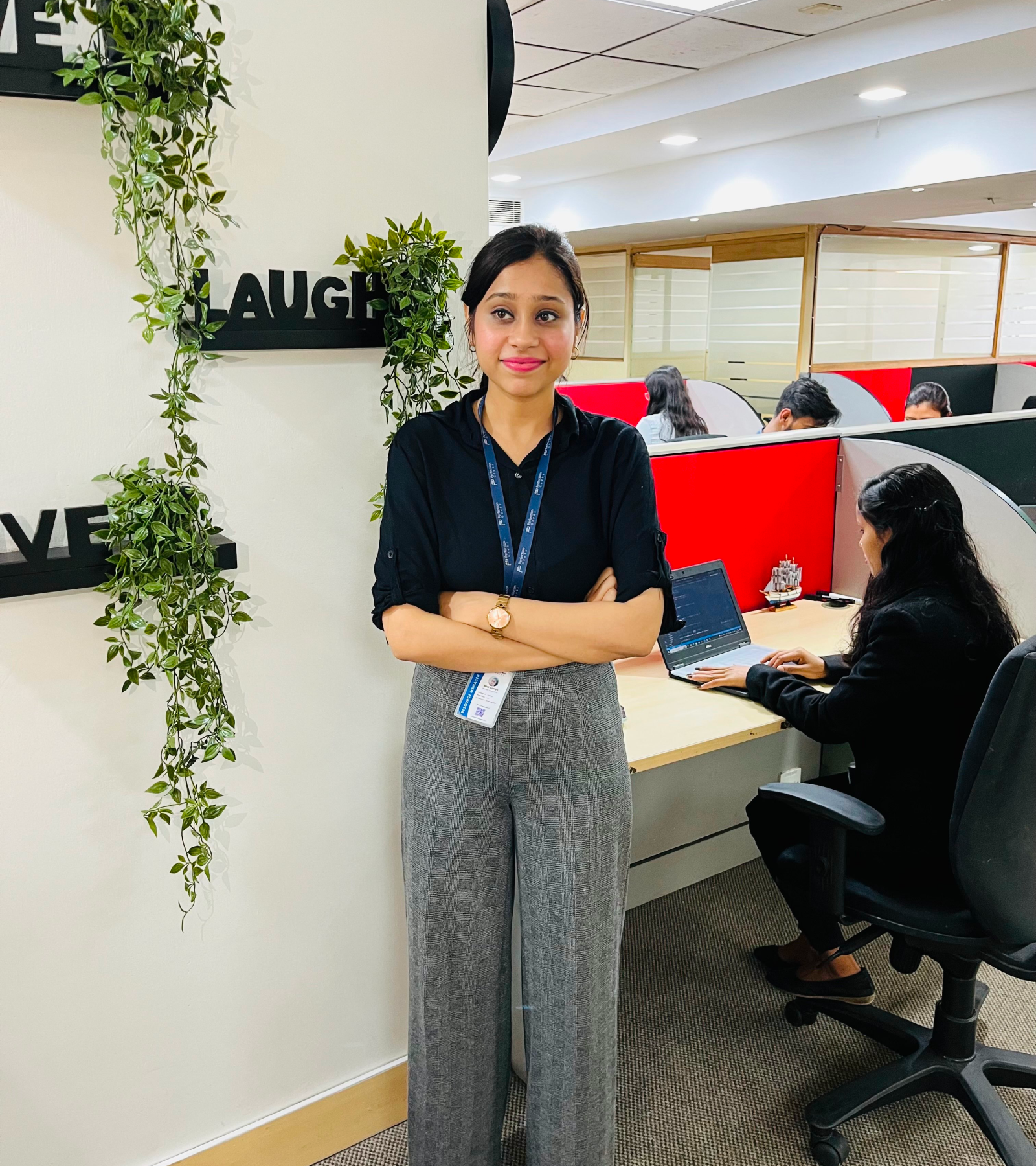Decoding the Development Cost of an App Like AT&T Smart Home Manager

AUG, 8, 2024 16:50 PM
Decoding the Development Cost of an App Like AT&T Smart Home Manager
Smart home technology has emerged as a game-changer in how we interact with our living spaces. Among the innovative solutions available, the AT&T Smart Home Manager stands out as a leading example of how technology can enhance home management through intuitive and user-friendly interfaces. This article explores the development cost of an app like AT&T Smart Home Manager, highlighting key factors that influence pricing, and providing insights into how different technology trends impact app development.
Introduction to AT&T Smart Home Manager App
The AT&T Smart Home Manager is a comprehensive application designed to offer users control over their smart home devices. It allows users to manage their internet settings, monitor connected devices, and automate various home functions. With features like real-time alerts, remote control, and detailed usage statistics, the app enhances user experience and provides seamless integration with a range of smart home devices.
To develop an app of this magnitude, several factors come into play, each influencing the overall cost. Understanding these factors is crucial for businesses considering the development of similar smart home management applications.
Key Factors Influencing the Development Cost of an App Like AT&T Smart Home Manager
Developing an app similar to AT&T Smart Home Manager involves multiple factors that significantly influence its overall development cost. Each element, from the app’s complexity to the choice of technology stack and team expertise, plays a crucial role in determining the final price. Lett’s delve deeper into these key factors to better understand their impact on the development process and costs.
App Complexity and Features
The complexity of an app like AT&T Smart Home Manager is a primary driver of development costs. Here's a detailed look at how various features contribute to the complexity:
- Device Integration:
- Custom Coding and APIs: Integrating a wide range of smart home devices requires custom coding and interaction with specific APIs. Smart home ecosystems often consist of various devices from different manufacturers, each with its own communication protocols. Custom coding ensures that the app can interact seamlessly with these diverse devices. This process involves understanding and implementing various API standards (e.g., Z-Wave, Zigbee, or proprietary APIs), which adds to the development time and cost.
- Protocols and Standards: Different smart home devices use various communication protocols and standards. The app must support these protocols to ensure compatibility. Implementing and testing these integrations can be time-consuming and require specialized expertise, thus increasing costs.
- Real-Time Notifications:
- Push Notifications and Alerts: Implementing real-time notifications involves setting up a robust messaging infrastructure that can deliver alerts to users promptly. This includes integrating push notification services, configuring notification triggers, and ensuring timely delivery. Real-time capabilities often require more complex backend systems and increased data processing power, contributing to higher costs.
- User Customization: Allowing users to customize their notification preferences adds another layer of complexity. This feature requires additional design and development efforts to create a user-friendly interface for managing notification settings.
- User Authentication and Security:
- Authentication Methods: Securing user access through robust authentication methods (e.g., multi-factor authentication, biometric login) is essential. Implementing these methods requires additional development time and resources to ensure secure and seamless user experiences.
- Data Security: Ensuring data protection involves implementing encryption, secure communication protocols, and compliance with data protection regulations (e.g., GDPR, CCPA). Integrating these security measures requires specialized knowledge and additional development efforts.
- User Interface (UI) Design:
- Design Process: Creating an intuitive and visually appealing UI involves several stages, including wireframing, prototyping, and user testing. High-quality UI design requires collaboration between UI/UX designers and developers to ensure the interface is both functional and aesthetically pleasing.
- User Experience (UX) Testing: Detailed UX testing involves gathering user feedback to refine the design. This iterative process helps identify and resolve usability issues, ensuring a seamless user experience. The more thorough the testing, the higher the associated costs.
- Feature Set:
- Core Features: Basic features such as device management, scheduling, and status monitoring form the foundation of the app. Each feature requires specific development efforts and contributes to the overall cost.
- Advanced Features: Adding advanced features like voice control, machine learning for predictive analytics, or integration with other smart home ecosystems (e.g., Google Home, Amazon Alexa) increases complexity and cost.
Development Team and Expertise
The composition and expertise of the development team are crucial factors in determining the cost. Here’s a breakdown of the key roles involved:
- Project Managers:
- Role and Responsibilities: Project managers oversee the entire development process, ensuring that the project stays on track, within budget, and meets deadlines. They coordinate between various teams, manage resources, and handle project risks.
- Cost Impact: Experienced project managers with a track record of handling complex projects may command higher fees, contributing to the overall cost of development.
- Developers:
- Skill Set: The development team must possess skills in various programming languages and frameworks. For an app like AT&T Smart Home Manager, expertise in languages such as Java, Swift, or Kotlin for mobile development and Python or Node.js for backend services is essential.
- IoT Expertise: Developing IoT applications requires specialized knowledge in IoT protocols, device communication, and integration. Developers with expertise in these areas are often in high demand and can influence the development cost.
- UI/UX Designers:
- Design Quality: High-quality UI/UX design involves creating a visually appealing and user-friendly interface. This includes detailed design work, user research, and iterative testing.
- Cost Considerations: Skilled UI/UX designers with experience in designing for smart home apps may charge premium rates, impacting the overall cost.
- Quality Assurance (QA) Testers:
- Testing Scope: QA testers ensure the app is free from bugs and performs well across different devices and scenarios. This includes functional testing, performance testing, security testing, and user acceptance testing (UAT).
- Cost Factors: Comprehensive QA testing requires a dedicated team and specialized tools, adding to the development cost.
- Hiring a Top-Tier Development Company:
- Reputation and Expertise: Partnering with a top-tier mobile app development company, such as those in major cities like Delhi, offers access to experienced professionals and advanced resources. However, their expertise and reputation may come with higher costs.
- Cost vs. Quality: While top-tier companies may charge more, they often deliver higher quality and more reliable solutions, which can be beneficial in the long run.
Technology Stack

The choice of technology stack significantly affects the development cost. Here’s an in-depth look at the components of the technology stack:
- Programming Languages:
- Mobile Development: For iOS apps, Swift or Objective-C is typically used, while Java or Kotlin is preferred for Android apps. Each language has its own development ecosystem and cost implications.
- Backend Services: Languages like Python, Node.js, or Ruby on Rails are commonly used for backend development. The choice of language can impact the efficiency and cost of backend services.
- Frameworks and Libraries:
- Development Frameworks: Frameworks such as React Native or Flutter allow for cross-platform development, potentially reducing costs compared to developing separate native apps for iOS and Android.
- Licensing Costs: Some frameworks and libraries may have associated licensing fees or subscription costs, impacting the overall development budget.
- IoT Integration:
- APIs and Protocols: Integrating IoT technology involves working with various APIs and communication protocols (e.g., MQTT, CoAP). Costs include purchasing or licensing APIs, integrating them, and ensuring compatibility with different devices.
- Testing and Compliance: Ensuring that the app meets IoT standards and works reliably with various devices requires extensive testing, adding to the cost.
Backend Infrastructure
A robust backend infrastructure is critical for the app’s performance and scalability. Key components include:
- Servers and Hosting:
- Cloud Services: Costs associated with cloud services (e.g., AWS, Azure, Google Cloud) include server hosting, storage, and bandwidth. The scale of cloud infrastructure needed depends on the app’s expected user base and data processing requirements.
- Server Management: Managing and maintaining servers involves additional costs, including monitoring, backups, and scaling.
- Database Management:
- Database Design: Implementing and optimizing databases to store user data, device settings, and application logs requires careful planning and development.
- Costs: Database management costs include licensing fees for database systems (e.g., SQL, NoSQL), data storage, and backup solutions.
- Security Measures:
- Encryption and Compliance: Ensuring data protection through encryption, secure communication protocols, and compliance with regulations (e.g., GDPR, CCPA) involves implementing and maintaining robust security measures.
- Cost Impact: Security measures require specialized expertise and additional development time, impacting the overall cost.
Maintenance and Updates
Post-launch maintenance and updates are essential for keeping the app functional and relevant. Here’s what’s involved:
- Bug Fixes:
- Issue Resolution: Addressing bugs and performance issues that arise after launch requires ongoing development efforts and can impact the cost of maintenance.
- Patch Releases: Regular patch releases to fix bugs and improve performance contribute to maintenance costs.
- Feature Enhancements:
- User Feedback: Adding new features or enhancing existing ones based on user feedback involves additional design and development work.
- Cost Considerations: Feature enhancements are typically billed as part of ongoing maintenance or as separate project phases.
- Compatibility Updates:
- Device and OS Updates: Ensuring the app remains compatible with new devices and operating system versions requires regular updates and testing.
- Maintenance Costs: Compatibility updates are an ongoing expense and are usually calculated as a percentage of the initial development cost.
Geographical Factors
The location of the development team can influence the cost. Here’s how:
- Regional Pricing Differences:
- Cost Variations: Development costs can vary significantly based on the region. For example, mobile app development companies in Delhi may offer competitive pricing compared to their counterparts in other regions or countries.
- Expertise and Resources: Local companies with a b reputation and expertise in smart home technology may charge higher rates, but they often deliver higher quality and more reliable solutions.
- Choosing a Local Development Partner:
- Benefits: Working with a local development partner can facilitate better communication, project management, and support.
- Cost-Benefit Analysis: While local development teams may charge higher rates, their expertise and proximity can lead to better outcomes and more efficient project execution.
Estimating the Development Cost
To provide a rough estimate of the development cost for an app like AT&T Smart Home Manager, consider the following breakdown:
- Design Phase: $5,000 - $15,000
- Includes wireframing, UI/UX design, and prototyping.
- Development Phase: $30,000 - $100,000
- Costs vary based on complexity, features, and technology stack.
- Backend Infrastructure: $10,000 - $30,000
- Includes server costs, database management, and security measures.
- Testing and Quality Assurance: $5,000 - $15,000
- Ensures the app is free from bugs and performs well.
- Maintenance and Updates: $5,000 - $20,000 per year
- Ongoing support, feature enhancements, and compatibility updates.
- Total Estimated Cost: $55,000 - $180,000
These estimates are approximate and can vary based on specific requirements, the development team’s rates, and other factors.
Choosing the Right Development Partner
Selecting the right development partner is crucial for a successful project. Here are some tips for choosing a top Delhi mobile app development company:
- Experience and Expertise: Look for companies with a proven track record in developing similar smart home or IoT applications.
- Portfolio and References: Review their past projects and client testimonials to gauge their capability.
- Technology Stack: Ensure the company is proficient in the technologies required for your app.
- Communication and Collaboration: Choose a partner with b communication skills and a collaborative approach to ensure smooth project execution.
The Role of Emerging Technologies
Emerging technologies such as blockchain and advanced IoT integrations can add unique features to your app but may also influence the cost. For instance:
- Blockchain Technology: Integrating blockchain for enhanced security and data integrity can add to the development cost but provides added benefits in terms of transparency and security.
- Advanced IoT Solutions: Incorporating cutting-edge IoT technology for seamless device integration may require additional investment but can significantly enhance the app’s functionality.
Conclusion
Developing an app like AT&T Smart Home Manager involves several factors that impact the overall cost. From app complexity and development team expertise to technology stack and maintenance, each element contributes to the final price. Understanding these factors can help businesses make informed decisions and plan their budgets effectively.
If a business wants to develop a smart home management app, teaming up withPerfectionGeeks is a smart move. They have the expertise and resources to turn your vision into reality. By using the latest technologies and putting user experience first, you can create cutting-edge solutions that not only improve the smart home ecosystem but also provide great value to users.
Strategy
Design
Blockchain Solution
Development
Launching
Testing
Maintenance
Contact US!
India

Plot 378-379, Udyog Vihar Phase 4 Rd, near nokia building, Electronic City, Phase IV, Sector 19, Gurugram, Haryana 122015
Copyright © 2025 PerfectionGeeks Technologies | All Rights Reserved | Policy
Contact US!
India 
Plot 378-379, Udyog Vihar Phase 4 Rd, near nokia building, Electronic City, Phase IV, Sector 19, Gurugram, Haryana 122015
Copyright © 2025 PerfectionGeeks Technologies | All Rights Reserved | Policy







